Omaha, NE Pollen and Allergy Report for Summer 2023
Pollen Allergy Trends in Omaha, NE
When is pollen lowest in Omaha, NE?

February
Lowest month total PPM
Avg. PPM
When is pollen highest in Omaha, NE?

April
Highest month total PPM
Avg. PPM
How does pollen in Omaha, NE compare to Nebraska?
Omaha has a higher average PPM than the state of Nebraska.
Omaha yearly avg PPM:
Nebraska yearly avg PPM:
How does pollen in Omaha, NE compare to the USA?
Omaha has a higher average PPM than the USA.
Omaha yearly avg PPM:
USA yearly avg PPM:
Is pollen worse this year in Omaha, NE?
Spring 2023 was worse than spring 2022.
Spring 2023 PPM:
Spring 2022 PPM:
Average PPM in Omaha, NE
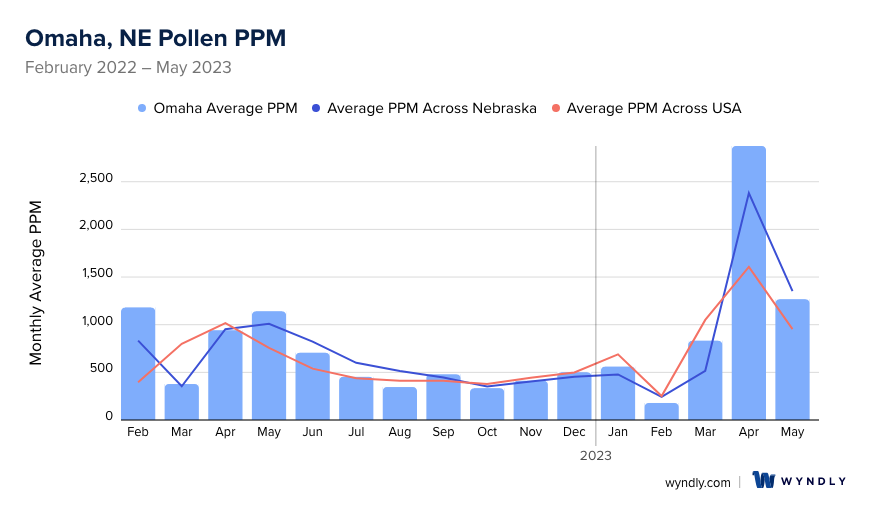
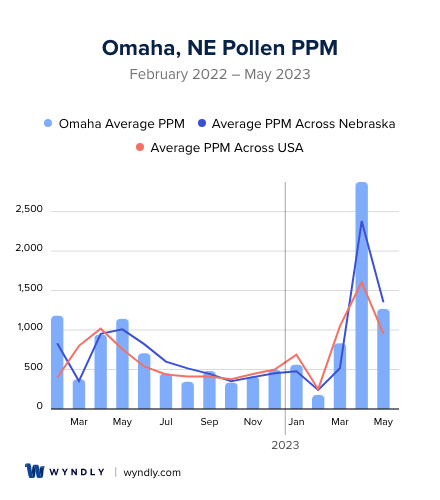
Omaha, NE Pollen and Allergy Breakdown by Month
Grass
When is grass pollen highest in Omaha, NE?
February has the highest grass pollen in Omaha, NE with an average PPM of
When is grass pollen lowest in Omaha, NE?
November has the lowest grass pollen in Omaha, NE with an average PPM of
Tree
When is tree pollen highest in Omaha, NE?
April has the highest tree pollen in Omaha, NE with an average PPM of
When is tree pollen lowest in Omaha, NE?
October has the lowest tree pollen in Omaha, NE with an average PPM of
Weed
When is weed pollen highest in Omaha, NE?
April has the highest weed pollen in Omaha, NE with an average PPM of
When is weed pollen lowest in Omaha, NE?
February has the lowest weed pollen in Omaha, NE with an average PPM of
Omaha, NE Pollen Monthly Breakdown by Pollen Type
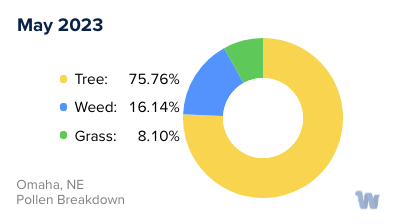
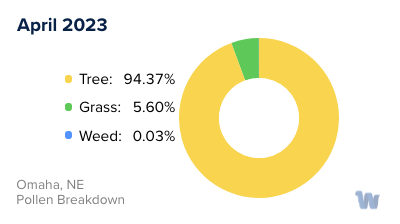
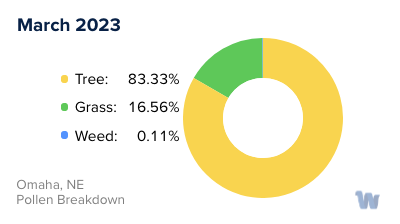
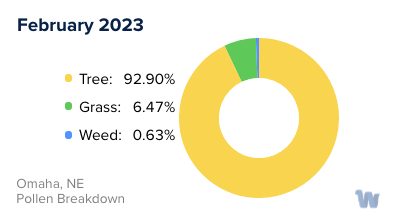
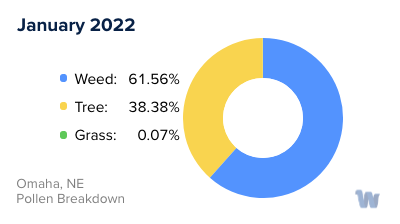
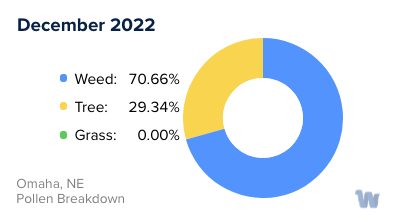
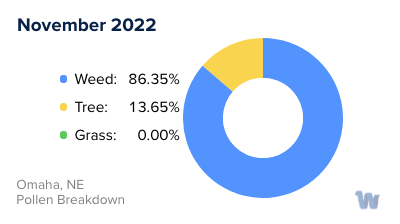
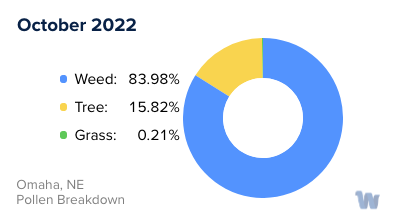
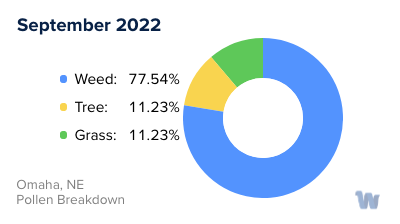
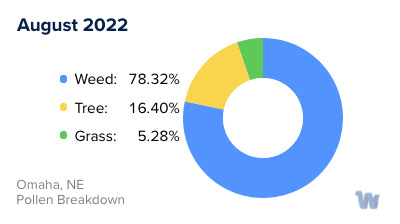
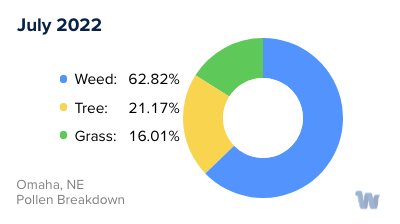
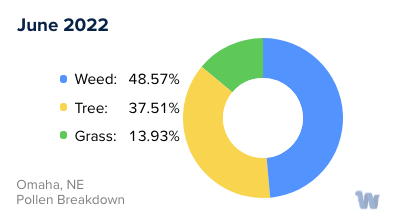
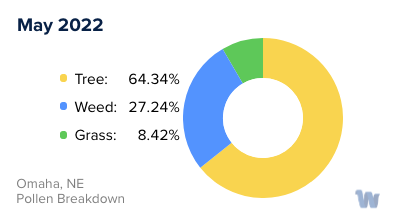
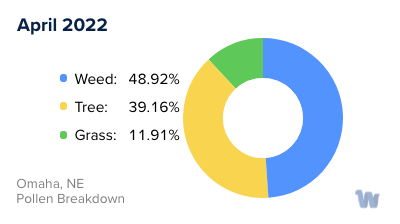
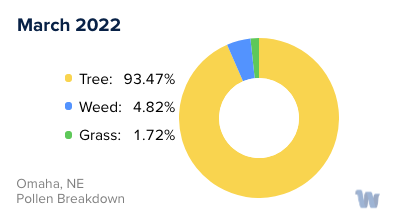
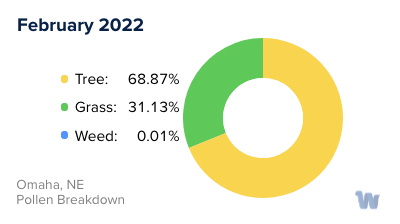
Pollen and Hay Fever in Omaha, NE
Pollen allergies, often referred to as "hay fever," are a common health concern for residents of Omaha, Nebraska. In this region, there are several key types of pollen that can trigger allergic reactions, with their presence varying across different seasons.
Starting in early spring, trees begin to release their pollen, marking the onset of the allergy season for many. The most common culprits in Omaha include oak, cedar, and pine. These trees produce large amounts of fine, lightweight pollen that can easily be carried by the wind, spreading far and wide across the city.
As spring transitions into summer, grass pollen takes center stage. In Omaha, the types of grasses that contribute to pollen allergies include Kentucky bluegrass, ryegrass, and Timothy grass. These grasses release their pollen during warm, dry, and windy days, typically peaking in late spring and early summer.
Towards the end of summer and the start of fall, the focus shifts to weed pollen. Ragweed, a common plant in Nebraska, is a significant trigger of hay fever symptoms. Other weeds such as sagebrush and lamb's quarters also contribute to the pollen count during this period.
While each type of pollen has its peak season, the specific timing can vary from year to year, depending on factors like weather patterns and temperature. This variability is important to keep in mind, as it influences the duration and severity of the allergy season.
The city's location in the Midwest, with its wide-open spaces and agricultural surroundings, can increase exposure to these pollens. However, it's not just the great outdoors where pollen can affect us. Pollen grains can hitch a ride on clothing, pets, and even our hair, making their way into our homes and offices.
Living in Omaha, it's crucial to understand the ebb and flow of these pollen seasons, as it can help you better anticipate and manage the impact of hay fever. Awareness is the first step towards maintaining your well-being during these pollen-heavy times of the year.

